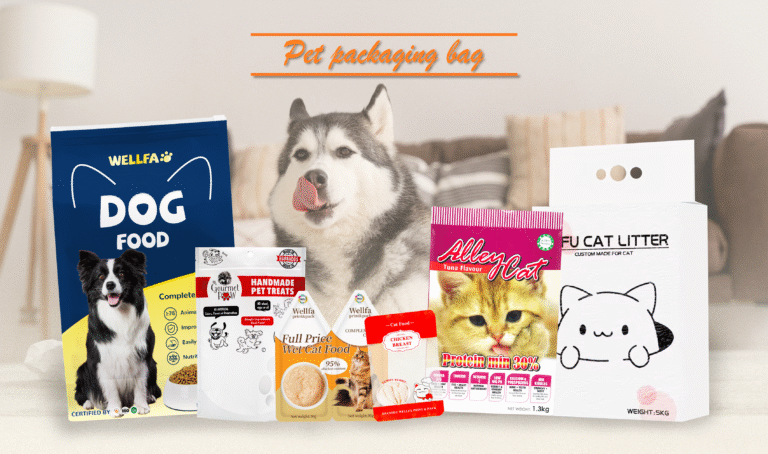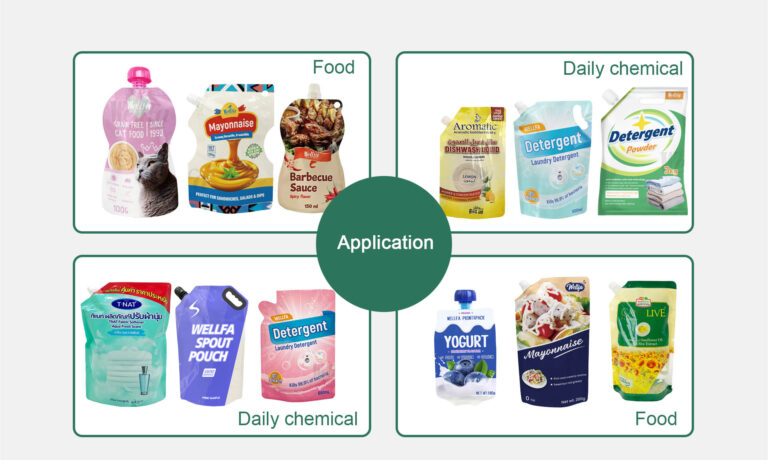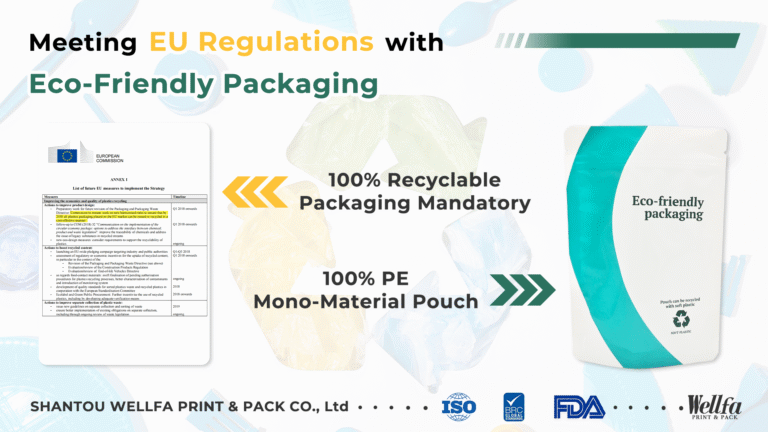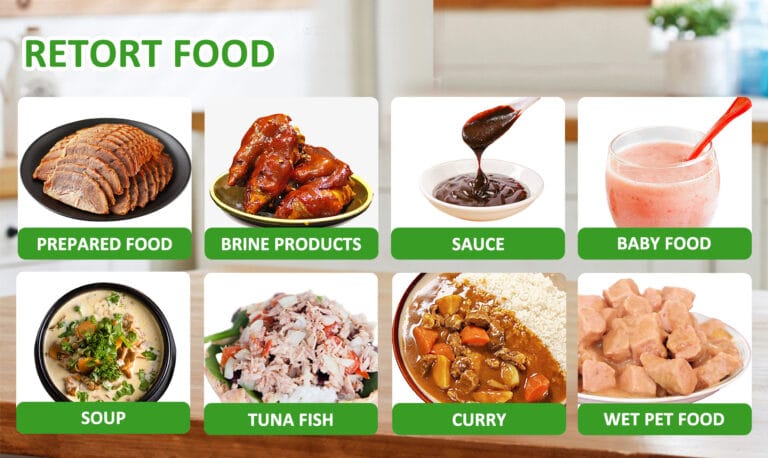定制塑料包装袋的综合指南
定制塑料包装袋的综合指南
我. 介绍
在当今的竞争市场, 自定义包装的重要性不能被夸大. 从建立品牌身份到确保产品保护, 正确的包装可以使一切有所不同. 塑料包装袋, 尤其, 由于其多功能性,已经成为一个流行的选择, 成本效益, 和适应性. 对于那些寻求优质材料的人, 考虑探索一个 铝箔制造商. 本文旨在提供有关如何自定义产品的合适塑料包装袋的综合指南. 我们将深入研究各个方面, 从了解您的产品到选择正确的材料和设计, 确保您的品牌和客户无缝体验.
二. 了解您的产品
一个. 产品类型
自定义塑料包装袋的第一步是了解您打算包装的产品类型. 不同的产品有不同的要求, 包装必须满足这些需求. 例如, 食品通常需要包装,从而提供防潮的障碍保护, 氧, 和光线以保持新鲜感并延长保质期. 液体和饮料需要防泄漏和抗泄漏的选择, 虽然药品和化妆品可能需要篡改功能以确保安全性和完整性.
b. 产品规格
考虑产品的具体特征, 例如重量, 体积, 脆弱性, 和保质期. 轻巧的零食产品, 例如, 与笨重且重型液体洗涤剂相比,包装需求不同. 脆弱的物品可能需要袋中的其他缓冲或保护层, 虽然保质期较短的产品可能会受益于高障碍材料,以维持随着时间的推移质量.
c. 包装要求
根据产品需求确定基本包装要求. 这些可能包括水分的屏障特性, 氧, 和轻型保护, 为方便起见的可重新授权, 或提高可用性的特定格式. 在此过程的早期解决这些要求将指导您的材料和设计选择, 确保最终产品与您的目标保持一致.

三、. 材质选择
一个. 塑料类型
选择合适的塑料材料对于包装的有效性至关重要. 常见材料包括:
- 聚乙烯 (PE): 以其灵活性和耐用性而闻名, PE通常用于干粮, 冷冻产品, 和液体.
- 聚丙烯 (聚丙烯): 提供了极好的清晰度和对高温的抵抗力, 非常适合需要灭菌的包装.
- 聚对苯二甲酸乙二醇酯 (宠物): 为水分和氧气提供强大的屏障特性, 适用于需要更长保质期的产品.
每种材料都有其独特的特性, 了解这些可以帮助您选择最适合您的特定需求的方法.
b. 环境考虑
越来越强调可持续性, 考虑到环保材料至关重要. 选项包括:
- 可回收塑料: 这些材料可以回收到新产品中, 减少浪费.
- 可生物降解的塑料: 能够随着时间的推移自然分解, 最小化环境影响.
- 可堆肥塑料: 设计用于在堆肥条件下分解, 促进土壤健康.
选择可持续材料不仅反映了对企业社会责任的承诺,而且还会引起生态意识消费者的共鸣.
c. 耐用性和灵活性
您的包装材料必须在耐用性和灵活性之间取得平衡. 该袋应足够强大,可以在处理和运输过程中保护产品,同时保持灵活的柔软使用. 例如, 站立袋需要一定的刚性才能保持其结构, 而毛刺小袋需要灵活性才能扩展.

四号. 设计和功能
一个. 小袋格式
选择合适的小袋格式对于功能和客户便利性至关重要. 通用格式包括:
- 站立小袋: 以其直立在货架上的能力而受欢迎, 增强可见性和可访问性.
- 平袋: 适用于不需要自立能力的单式产品或物品.
- 小袋: 提供额外的音量和稳定性, 适合较大或较重产品的理想.
每种格式都有其优势, 选择取决于产品的性质以及如何显示和使用.
b. 闭合机制
封闭机制是小袋设计的关键组成部分, 影响可用性和产品保存. 选项包括:
- 拉链: 为多用途产品提供可重复性, 增强新鲜度和便利性.
- 喷口: 液体产品的理想, 确保受控分配和溢出预防.
- 撕裂: 便利开放, 特别是单使用包装.
选择适当的封闭机制可以极大地提高用户体验和产品满意度.
c. 美学元素
美学在吸引客户和增强品牌身份方面发挥着重要作用. 考虑如何颜色, 印刷设计, 透明度选项可能会影响包装的整体外观. 例如, 鲜艳的颜色和大胆的图形可以使您的产品在架子上脱颖而出, 袋中的窗户可以使消费者看到内部的产品, 建立信任和上诉.

V. 印刷和品牌
一个. 自定义打印选项
打印是自定义包装的组成部分, 允许您展示您的品牌和产品信息. 两种常见的打印方法是:
- 弹性印刷: 适用于大量订单, 提供成本效益和质量.
- 数字印刷: 非常适合需要频繁更新的较小跑步和设计, 提供灵活性和鲜艳的色彩.
了解每种打印方法的优势将帮助您选择满足包装需求的最佳选择.
b. 品牌元素
您的包装是一种强大的品牌工具. 确保您的徽标, 品牌颜色, 并与您的品牌标识一致地展示并与版式保持一致. 跨不同产品品牌的一致性增强了品牌认可和忠诚度.
c. 法律和法规信息
包括必要的产品信息和合规性标签至关重要. 这可能涵盖成分, 营养事实, 使用说明, 到期日期, 和监管符号, 取决于产品和市场要求. 确保这些信息清晰,准确有助于建立消费者信任并履行法律义务.
六、. 供应商注意事项
一个. 研究供应商
寻找可靠的供应商对于您的自定义包装项目的成功至关重要. 寻找拥有良好声誉的供应商, 积极评论, 以及在生产高质量包装方面的验证记录.
b. 样品测试
在投入大规模之前, 请求潜在供应商的样品. 这使您可以评估材料质量, 打印精度, 和包装的总体感觉. 使用这些样品测试包装在实际条件下的性能.
c. 最小订单数量和交货时间
理解供应商的政策,以最低订单数量 (司令) 交货时间很重要. 确保他们的生产时间表与您的产品发布计划和需求保持一致. 这有助于防止供应链中的任何延误或问题.
七. 成本分析
一个. 预算考虑
平衡成本与质量是包装决策的关键. 确定您的预算限制并确定对产品最重要的功能的优先级. 有时, 通过提高消费者满意度和品牌知觉,在高质量包装上投入更多的投资可以取得回报.
b. 批量订单折扣
许多供应商提供批量订单的折扣. 考虑订购大量数量时的潜在节省,并评估它是否与产品的销售量和存储功能保持一致.
c. 隐藏成本
注意隐藏的成本, 例如运输, 海关职责, 和潜在的浪费. 确保将这些费用纳入您的预算中,以避免惊喜并保持盈利能力.
(下一段)




